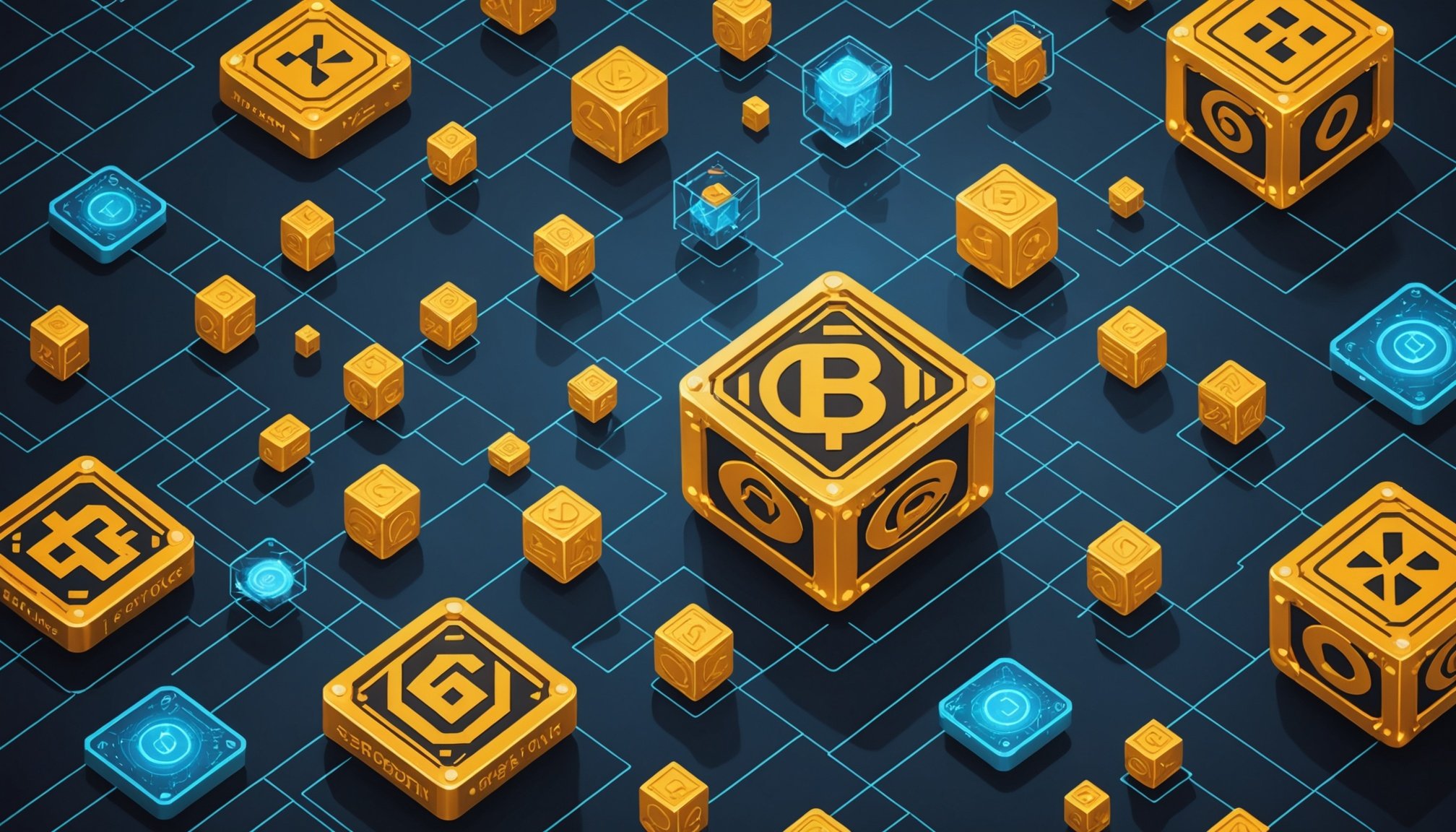Overview of Blockchain in Gaming
Understanding blockchain technology in the gaming industry starts with recognising its role as a decentralised ledger. It ensures that digital transactions are secure, transparent, and immutable. Within gaming, blockchain revolutionises how digital assets are verified and transferred, providing a trust-centric backbone for both developers and players.
Historical Perspective: Emergence of Blockchain in Gaming
The application of blockchain in gaming began as a response to player demands for ownership and control over in-game assets. Games like Cryptokitties were pioneers, showcasing a new era where players truly owned digital collectibles. This movement has since evolved, broadening its reach across multiple genres.
Also to discover : Unlocking Inclusive Game Design: Essential Strategies for Developing Accessible Interfaces for Players with Disabilities
Key Features Benefiting Game Design and Player Experience
- Decentralisation: Reduces the risk of data manipulation, ensuring integrity.
- Security: Enhances protection against fraud, bolstering player confidence.
- Interoperability: Allows players to transfer assets across different games, widening their gaming experience.
In essence, these characteristics empower both developers and gamers, fostering innovation while mitigating transaction risks. As the industry grows, blockchain is steadily integrating, promising players unprecedented autonomy and engagement in their favourite virtual realms.
Have you seen this : Revolutionizing Education with VR: Essential Techniques for Maximum Immersion and Effective Learning
Overview of Blockchain in Gaming
In the gaming industry, blockchain technology is a transformative force reshaping digital transactions. At its core, blockchain is a decentralised ledger system allowing information to be securely recorded across multiple systems, offering increased security and transparency. Within gaming, this technology enables players to engage in secure transactions without traditional intermediaries, leading to a more robust and fraud-resistant environment.
Historically, blockchain technology began infiltrating the gaming space with the emergence of games like “CryptoKitties” in 2017. This gave players the ability to own and trade in-game assets using blockchain, a revolutionary concept that has since expanded across the industry.
Key features of blockchain that benefit game design include the creation of immutable records, fostering player trust and ensuring the authenticity of digital assets. These features enhance not only the player experience but also game developers’ capability to create complex economies within games. Players can genuinely own their in-game purchases, trade them with others, or even move them between different gaming platforms, offering a level of interactivity previously unseen in traditional gaming models.
Overall, blockchain technology in gaming offers a promising enhancement to gameplay, promoting both creativity and security in digital transactions.
Successful Implementations of Blockchain in Games
The integration of blockchain technology in the gaming industry has led to remarkable real-world examples. Several blockchain games have demonstrated innovative use cases, effectively showcasing the potential of this technology.
Highlighting Leading Blockchain Games
Games like Axie Infinity and Decentraland serve as prominent examples in the world of blockchain. These games have popularised the concept of ownership in the digital realm by allowing players to genuinely own and trade digital assets. This is facilitated through Non-Fungible Tokens (NFTs), offering players the chance to engage deeply in virtual economies.
Analyzing Economic Models in Blockchain Gaming
The economic models of many blockchain games are built upon these tokenized assets. The play-to-earn framework of Axie Infinity is a prime example, where players earn digital currency through gameplay. This model has made gaming not just a leisure activity but a source of income for many, highlighting the importance of sustainable economic systems.
Community Engagement and Player Ownership
Community engagement is bolstered by blockchain, as players have real stake in in-game economies. Through decentralised governance, players can influence game development and decision-making, reflecting a shift towards player-centric ecosystems. This empowerment fosters a more immersive gaming experience, revolutionising player interaction and ownership in gaming spaces.
Successful Implementations of Blockchain in Games
The rise of blockchain games heralds a transformative shift in the gaming industry. These games utilise blockchain technology to create unique, tokenised assets, offering players verifiable ownership and trade capabilities. Notable examples of such real-world implementations are games like “Axie Infinity” and “The Sandbox”.
Highlighting Leading Blockchain Games
“Axie Infinity” exemplifies blockchain’s potential by enabling players to own and trade creatures called Axies. Its play-to-earn model has bolstered player engagement, integrating financial incentives into gameplay. Similarly, “The Sandbox” utilises blockchain to allow users to create, purchase, and sell virtual land and assets, fostering a dynamic community-driven economy.
Analyzing Economic Models in Blockchain Gaming
In these games, economic models are transparent and decentralised. Blockchain secures transaction records, preventing fraud while allowing asset ownership to be easily verifiable. By leveraging blockchain, these games sustain long-term economic viability, a crucial factor for developers.
Community Engagement and Player Ownership
Blockchain games thrive on community interaction. The decentralised nature enables players to genuinely own in-game assets, encouraging further investment. This ownership ethos propels player-driven marketplaces, enabling new levels of community collaboration within gaming ecosystems.
Security and Transparency in Gaming Transactions
In the gaming industry, secure transactions and transparency are vital for maintaining trust among players. Blockchain technology fortifies transaction security by recording each digital transaction on its decentralised ledger, making it immutable and resistant to tampering. This integrity enhances player confidence, knowing their transactions are safeguarded against potential fraud.
Traditional gaming transactions often suffer from vulnerabilities, like unauthorised access and data breaches. Blockchain’s cryptographic nature mitigates these risks, helping prevent such security lapses by ensuring each transaction is independently verified and securely recorded.
Moreover, transparency plays a crucial role in building trust within the gaming ecosystem. With blockchain, all transaction data is accessible and verifiable by all participants, reducing opaqueness and enabling players to track asset ownership and transaction history with ease. This openness is instrumental in fostering a fair gaming environment, discouraging fraudulent behaviour.
Thus, the application of blockchain in gaming is poised to redefine the standards of transactional security and transparency, providing players with a reliable framework for their digital interactions. As blockchain adoption continues to expand, we anticipate a shift towards more equitable and trusted gaming spaces.
Security and Transparency in Gaming Transactions
In the gaming industry, ensuring secure transactions and maintaining transparency are paramount to fostering player trust. Blockchain technology plays a pivotal role in achieving this by providing a decentralised ledger system where every transaction is cryptographically secured, making data manipulation virtually impossible. This integrity allows players to engage confidently, knowing their digital assets are safe.
In contrast, traditional gaming platforms have struggled with fraud prevention and security breaches. Such vulnerabilities often lead to substantial financial losses and erode player trust. By comparison, blockchain’s immutable nature prevents unauthorised changes, offering a secure environment for transactions.
Moreover, transparency is integral to building confidence among players. With blockchain, all participants can access transaction records, removing opacity that often plagues conventional systems. This transparency means that every asset’s history is publicly verifiable, enhancing the sense of ownership and fairness within gaming ecosystems. Players who see real-time data on their transactions are more likely to trust and remain engaged with the gaming platform.
By ensuring both security and transparency, blockchain empowers players and developers, fostering a safer, more trustworthy gaming environment.
Potential Challenges of Integrating Blockchain in Gaming
Introducing blockchain technology into the gaming industry presents various challenges. One of the primary technical hurdles is the scalability of current blockchain solutions. As the number of users grows, transaction speeds might not meet the high demands of global gaming networks. Additionally, current technology struggles with power consumption, which can lead to sustainability concerns for developers and players alike.
Moreover, there is considerable resistance from traditional game developers. Many conventional developers are hesitant to embrace blockchain due to its unfamiliarity and the steep learning curve associated with its integration. They are cautious about adopting a system that might disrupt established economic structures and gameplay mechanics that players are accustomed to.
Regulatory and legal considerations also pose significant challenges. Regulations regarding cryptocurrencies and digital assets can vary widely between jurisdictions, creating uncertainty for developers aiming to implement blockchain technology in their games. Ensuring compliance with various international legal standards is crucial and can complicate integration processes further.
Consequently, these challenges necessitate innovative solutions and continued dialogue between industry leaders, developers, and regulators. The goal is to smoothly navigate the integration of blockchain into gaming while maximizing its benefits and minimizing potential drawbacks.
Future Trends and Expert Insights
The future of gaming is poised for transformation as blockchain technology continues to evolve. Industry experts predict enhanced player experiences, focusing on robust digital ownership and new interactivity levels. One key trend is the rise of decentralised economies within games, enabling players to trade assets seamlessly across platforms. This opens avenues for play-to-earn models, integrating financial benefits into gameplay.
Blockchain trends indicate a shift towards interoperability, where assets can move fluidly between different gaming ecosystems. This fosters creativity among players and developers, cultivating unique gaming landscapes. Experts suggest that this shift could democratise game development, allowing smaller studios to flourish by leveraging blockchain’s transparent frameworks.
Furthermore, blockchain’s secure environment encourages gamers to engage in economic activities with confidence, knowing their assets are protected. Industry leaders envision a future where players can influence game worlds through decentralised governance, promoting a player-centric ecosystem.
As blockchain’s role in gaming expands, it promises long-term implications for the industry. Developers are encouraged to explore these blockchain trends to remain competitive. By understanding these emerging trends, game creators can harness blockchain’s full potential, shaping a new era of interactive entertainment.
Future Trends and Expert Insights
As the future of gaming continues to evolve, blockchain trends are coming into sharper focus. Industry experts anticipate blockchain will play an increasingly vital role, reshaping gaming ecosystems. They suggest that decentralisation, coupled with the growth of virtual worlds, will move beyond novelty, embedding deeply in gaming’s fabric.
Industry leaders forecast a continued rise in games that integrate Non-Fungible Tokens (NFTs), enabling more profound player involvement through verifiable ownership of unique digital items. This trend not only adds economic value but can enhance gameplay dynamics by empowering players to create and maintain consumer-driven markets.
Moreover, the potential for cross-platform asset transfer stands to revolutionise player experiences, allowing assets to seamlessly move between different games and platforms. Such interoperability not only improves user engagement but opens new creative avenues for developers.
However, experts also caution against unchecked adoption, urging a balanced approach to integrating emerging technologies. They stress the importance of maintaining playability, ensuring that the technology enhances rather than impedes the gaming experience.
Through expert insights and predictive trends, blockchain technology promises to weave complex, immersive worlds with sustainable digital economies, providing an exciting frontier for future gaming adventures.
Practical Advice for Game Developers Considering Blockchain
When integrating blockchain technology into game development, developers should follow strategic steps. Initially, it’s crucial to familiarise oneself with the nuances of blockchain solutions, evaluating their suitability and performance. Understanding digital transactions within this context will allow for thoughtful design that enhances player experience.
Steps to Implement Blockchain in Game Development
-
Choose the Right Platform: Research and select a blockchain platform that aligns with your game’s requirements and scalability needs.
-
Design a Token Economy: Implement a well-thought-out token system that promotes player engagement without disrupting gameplay balance.
-
Integrate Seamlessly: Focus on incorporating blockchain features that naturally fit into the game’s existing mechanics.
Best Practices for Ensuring Player Security
Ensuring the security of player data and digital assets is paramount. Use robust cryptographic techniques to safeguard transactions and incorporate verification mechanisms to prevent fraud or data breaches.
Balancing Playability with Blockchain Features
Balancing innovation and playability is essential to ensure enjoyment. Developers must thoughtfully integrate blockchain features, like asset ownership, enhancing gameplay without overcomplicating mechanics. This approach maintains a pleasurable user experience while adopting cutting-edge technology.
Practical Advice for Game Developers Considering Blockchain
Integrating blockchain technology into game development requires careful planning. Developers must first comprehend the steps necessary for a successful adoption. Begin by identifying suitable gaming strategies that benefit from blockchain features like asset ownership or decentralised transactions.
Steps to Implement Blockchain in Game Development
Start with a thorough evaluation of your game’s vision, ensuring that blockchain integration aligns with player needs and gameplay mechanics. Select a blockchain platform that supports desired functionalities such as Non-Fungible Tokens (NFTs) for unique assets. Develop a modular architecture allowing flexibility as blockchain technology evolves.
Best Practices for Ensuring Player Security
Maintaining player security is paramount. Use robust cryptographic methods to safeguard digital transactions and player data. Implement multi-factor authentication and facilitate regular audits to prevent vulnerabilities. Educate players about secure practices to foster trust and engagement.
Balancing Playability with Blockchain Features
While focusing on blockchain integration, never lose sight of playability. Design with an emphasis on seamless user experiences, ensuring that blockchain features enrich rather than complicate the game. Avoid overwhelming players with overly technical interfaces; instead, create intuitive systems that complement their natural engagement. This balance ensures that innovation translates into increased player satisfaction.











